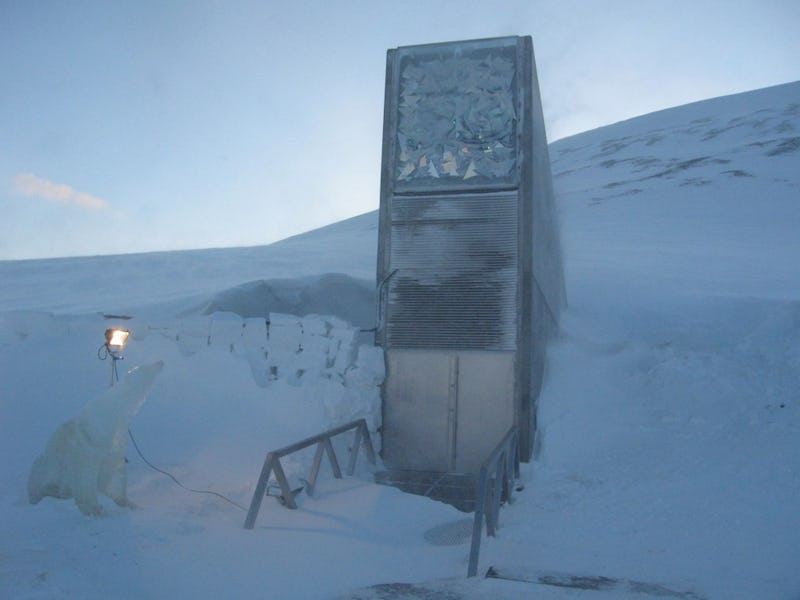A Doomsday Vault for Seeds Isn't Enough; We'll Also Need One for Our Germs
Our bodies are paying for urbanization, but scientists have a plan.

Whenever and however you think the apocalypse may happen, researchers have long held the belief in the need for contingencies. Hence, the expensive investments in initiatives like the Svalbard Global Seed Vault, which will protect human-kind’s seeds for posterity.
But these seeds won’t be enough to save whatever humans are able to survive some sort of mass casualty event, argue a team of researchers led by Rutgers University. In a move that would satisfy any doomsday prepper, the team proposes the construction of a global microbiome vault. In other words, an absurdly secure vault to store all our good germs.
Their argument is a nuanced one. As globalization spreads the trademark processed foods of today’s modern lifestyle, the human microbiome is losing a significant amount of of its diversity. This population of bacteria, viruses, yeasts, and other microscopic species who take up residence in our bodies help us function from day to day. Despite their size, they outnumber human cells ten to one. These communities are influenced by a variety of factors, including diet, environment, and health history, according to research by researchers at the Massachusetts Institute of Technology.
“These microbes co-evolved with humans over hundreds of millenia,” lead researcher and professor of Biochemistry, Microbiology and Anthropology at Rutgers-New Brunswick University, Maria Gloria Dominguez-Bello said in a statement. The 20th century is undoing all that good evolution, and as our microbiomes lose diversity and industrialization sweeps across nations, conditions from allergies to obesity will continue to rise.
Microsoft's underwater data center will be able to survive an EMP attack, possibly making it a place to ensure data survives a mass catastrophic event.
We still haven’t found the magic combination that makes someone’s collection of gut flora optimal. But while the genetic makeup of humans are 99.9 percent similar, each person’s microbiome wildly differs. It’s a project we’ve worked on since the 1960s, unpacking a shrinking variety of microbiota as time ticks away. Storing all that valuable gut data and bacteria may be necessary to making sure post-apocalyptic humans are able to eat and thrive.
In the meantime, the best we can do is preserve what we have. With careful collection and storage, we may one day reintroduce what we’ve lost.
If the project moves forward, Dominguez-Bello wants researchers to take samples from the world’s most diverse microbiomes. Remote communities untouched by urbanization are our best bet. For example, the residents of some Amazonian villages have double the diversity of the average American. Dominguez-Bello hopes that the samples could one day combat disease.
The Microbiota Vault would join the company of other remotely-located projects in preparation for impending doom, like Microsoft’s server in the North Sea and the Svalbard Vault, aka the Doomsday Vault, near the North Pole. The location worthy of storing precious microbiomes is yet to be determined, but at this rate, it’s safe to guess it won’t be particularly travel-friendly.
But if the vault could one day save humanity, it’s worth it.